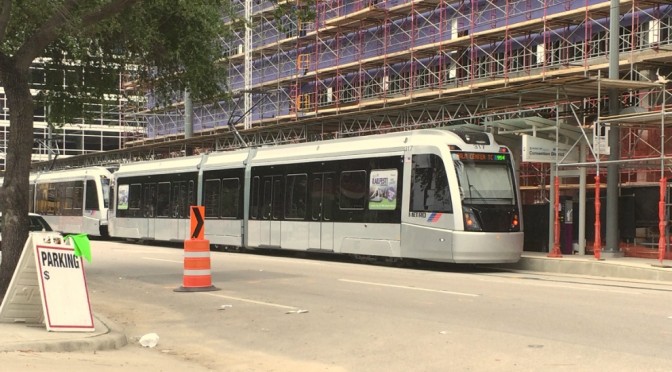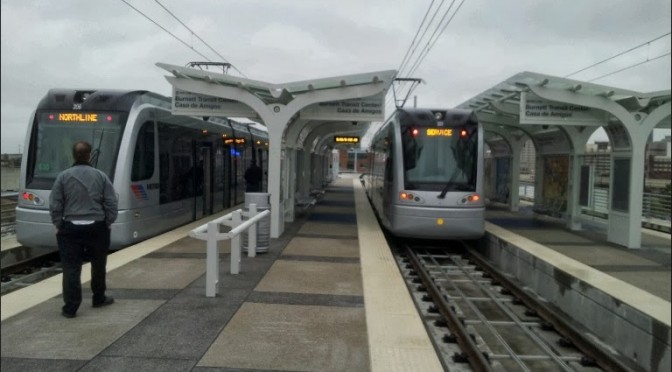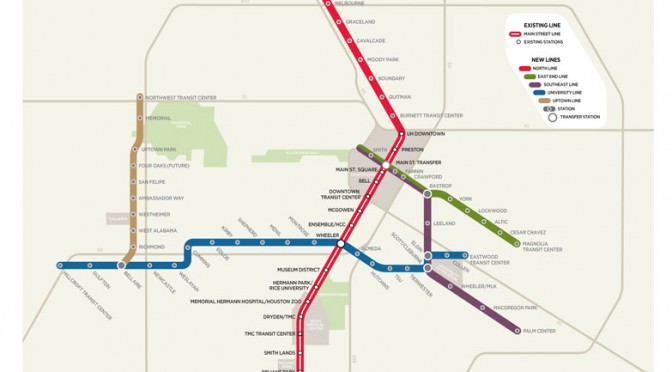
It's been a long time coming, but Houston METRO finally reached the big day. Dug Begley of the
Houston Chronicle has the scoop...
After years of construction and months of testing, riders began boarding Green Line trains headed from downtown east along Harrisburg and Purple Line trains toward the University of Houston and Palm Center Transit … Continue Reading ››

Some great news directly from the
METRO website...
In its first month of operation, the Red/North Line extension exceeded ridership projections by 62 percent.
METRO launched its 5.3-mile extension of the Red/North Line last Dec. 21 - extending the line from HCC-Downtown Station eight more stops … Continue Reading ››
Unless mine eyes and ears deceived me...
yes. Though unlike the Chronicle's Dug Begley, I'm not exactly ready to call him a 'new rail line champion'.
In a bit of a shocker on the House floor yesterday, Congressman Ted Poe spoke in support of federal funding for Houston …
Continue Reading ›› 
As we continue to disseminate the long arms of the 2012 election, one particular result has altered the immediate future for Houstonian... The METRO referendum passed by an impressive margin. What's good about the result is that it shows Houstonians support their public transit.
But the "devil" of this decision was in the …
Continue Reading ››
A Voice for the Rest of Texas


